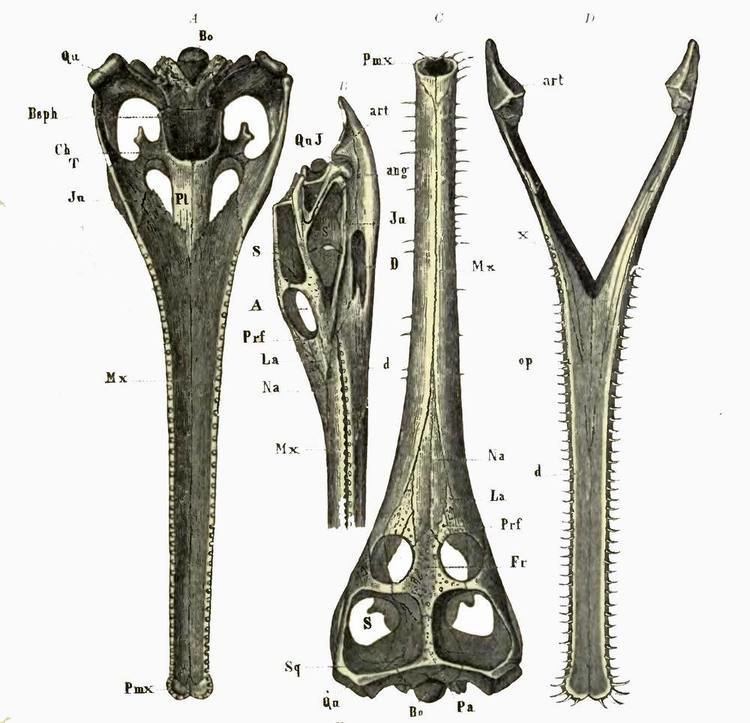Type Geological formation Named for Dashanpu | Country China Region Sichuan | |
 | ||
Sub-units Xiashaximiao Formation (Lower Shaximiao Formation), Shangshaximiao Formation (Upper Shaximiao Formation), Zhenchuchong Formation, Ziliujing Formation | ||
The Dashanpu Formation is a Mid to Late Jurassic rock formation in China, most notable for the wealth of dinosaurs that have been excavated from the area. The Dashanpu Formation sits in and around the small township of Dashanpu (simplified Chinese: 大山铺镇; traditional Chinese: 大山鋪鎮; pinyin: Dàshānpū zhèn), situated seven kilometres north-east from Sichuan's third largest city, Zigong, in the Da'an District.
Contents
Geology
The Dashanpu Formation includes four layers of rock: The upper and lower Shaximiao Formations (simplified Chinese: 上·下沙溪庙地层; traditional Chinese: 上·下沙溪廟地層; pinyin: shàng / xià Shāxīmiào dìcéng), although they are commonly referred to as one, simply being called "Shaximiao Formations". The upper Shaximiao Formation is also known as the Shangshaximiao Formation, and the lower Shaximiao Formation is also known as the Xiashaximiao Formation. The Shaximiao Formations are the most productive, despite being only two of four. The last two formations, the Zhenchuchong Formation and the Ziliujing Formation, are noticeably less productive and remain relatively unexplored.
Dinosaur finds
The Dashanpu Formation has produced mainly sauropods, but has also held numerous other dinosaur types, such as theropods and stegosaurians amongst others. In total, over 8,000 pieces of bone have been unearthed from the area – amounting to nearly 40 tonnes. The site was unknown until the early 1970s, when a Chinese gas company unearthed Gasosaurus in 1972. It would be the first of the many dinosaurs to be uncovered from the area. Most specimens found are held at the Zigong Dinosaur Museum which has been placed on the area during the mid-1980s.
Despite being a frequented "dinosaur-quarry" at present, the Dashanpu Formation was once a lush forest, evidence of which has been found alongside dinosaur remains in the form of fossilised wood. Paleontologists speculate that the area also had a lake that was fed by a large river. Dinosaur remains would have been swept toward the lake over millions of years, thus accounting for the hundreds of specimens found. Paleontologists have dated parts of the formation at about 168 to 161 million years old, between the Bathonian to Callovian stages of the Mid Jurassic.
Dong Zhiming's research
The paleontologist who has made the largest contribution to the formation and its excavation is Dong Zhiming. He first examined the formation in 1975, after bone fragments were found embedded in rock from the area. The site was being demolished to make way for both a natural gas field facility and a vehicle park when Dong first saw the area. Amongst the extensive clearings, Dong found numerous bone fragments which were exposed.
However, the specimens were being damaged due to bulldozers in the area and there would be little chance of closing the area as the state had invested millions of yuan in the site already. It was not until 1985 that the government finally agreed to close the construction on the site, and by then Dong and his team had already excavated over 100 dinosaurs from the area, including several rare sauropod skulls. A dinosaur found in the Dashanpu Formation, Dashanpusaurus dongi, was named in tribute of both Dashanpu and Dong Zhiming.
Paleobiota
In addition to dinosaur finds, many other prehistoric finds have been uncovered from the Dashanpu Formation. Amongst these finds are fishes, amphibians, turtles, marine reptiles such as crocodiles and also pterosaurs. Bienotheroides, a Tritylodont Synapsid has been found there, as well as Sinobrachyops, a Labyrinthodont.
